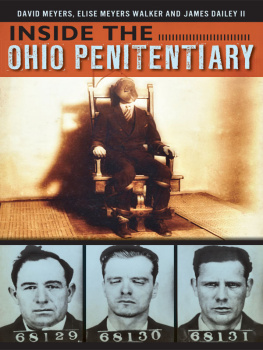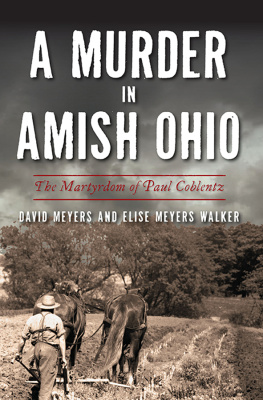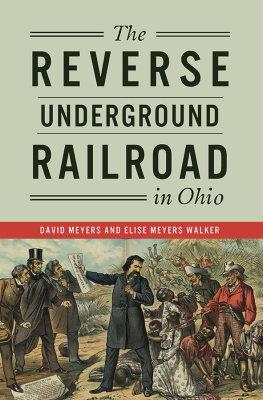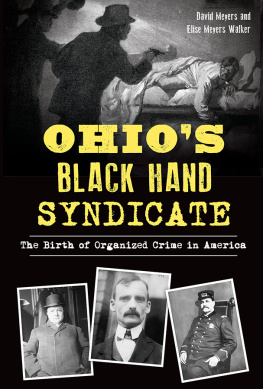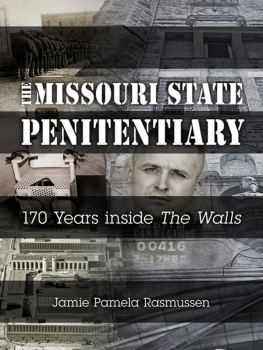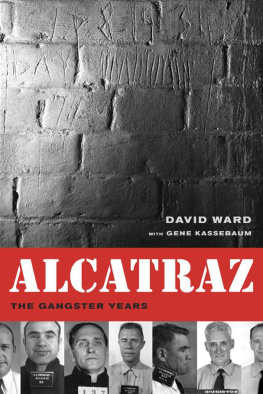Published by The History Press
Charleston, SC 29403
www.historypress.net
Copyright 2013 by David Meyers, Elise Meyers Walker and James Dailey II
All rights reserved
First published 2013
e-book edition 2013
Manufactured in the United States
ISBN 978.1.62584.550.4
Library of Congress CIP data applied for.
print edition ISBN 978.1.62619.097.9
Notice: The information in this book is true and complete to the best of our knowledge. It is offered without guarantee on the part of the author or The History Press. The author and The History Press disclaim all liability in connection with the use of this book.
All rights reserved. No part of this book may be reproduced or transmitted in any form whatsoever without prior written permission from the publisher except in the case of brief quotations embodied in critical articles and reviews.
Acknowledgements
There were a lot of people who contributed to this book simply by listening when we were thinking out loud. If you were one of these people, consider this your thanks in case we neglected to say something at the time. Your forbearance was appreciated, especially if you were one of those people who didnt really care about prison history. We would also like to acknowledge those who went out of their way to provide us with assistance, encouragement and tolerance: Beverly Meyers, Sam Walker, Lindsay Boggs, Jack Parente, Perry Dailey, Pam Coon, Michael Dailey, Jim Bowsher, Tara Narcross, Joe Gartrell, Karen Wilcox, Kent Crabtree and Tom Smith. Every image used in this book was taken from the Dailey Archives except for those provided by Tom Smith and the Library of Congress.
Introduction
Its ugly, ugly, uglya scar on the face of Columbus.
Its a monument to many thousands of mistakes.
Dana Buck Rinehart
When Mayor Dana Rinehart personally clobbered the faade of the old Ohio Penitentiary with a wrecking ball on August 1, 1990, spewing bricks and concrete across the parking lot, historians, preservationists and state officials were aghast. It may not have been the worst crime ever committed in Columbus, but the citys top-elected official had not only merely but also most sincerely broken the law. Despite making a $100,000 down payment to purchase the property, he had not secured permission to demolish it. Neither had he commissioned the required study to determine whether the existing buildings could be reused. Instead, Rinehart had climbed up onto the cranes seat and struck a blow for freedomsort of.
I know I probably shouldnt have done it, Rinehart later conceded. But we were trying to get the message across that we dont have to be the way we are. Always controversial, the feisty young politician had been reelected unopposed just three years earlier and was determined to change the face of the city. To his mind, knocking down stuff in order to start over seemed like a good first step. He wanted to start out with a blank canvas. What he got was the threat of a fine from the EPA while the city scrambled to erect a fence around the site and patch up the damage.
It wasnt until 1997 that Buck (a fitting nickname if ever there was one) got his wayand then only after a large portion of the imposing west wall unexpectedly collapsed onto Neil Avenue, burying a car beneath tons of rubble. The ugly dinosaur eyesore was finally razed. But by this time, the mayor had changed his tune. He was insisting that portions of the remaining edifice should be preserved. Otherwise, it would be a grievous loss to the city of Columbus.
Grievous loss or not, the Ohio Penitentiary (OP) was completely torn down and hauled away while tiny chunks of stone were hawked as souvenirs. The former prison site has since completely disappeared beneath the offices, condominiums, restaurants and other assorted buildings that constitute the Arena District. As was hoped, this development did inject new life into the downtown, although partially at the expense of an earlier one, the Brewery District. But there are some who continue to believe that the old prison faade would have made a distinctive architectural feature or a truly Spartan bed-and-breakfast.
Fifteen years after the Ohio Penitentiary was leveled, memories of it remain. After all, it had been one of the most prominent landmarks in the capital city for more than 160 years, second only to the statehouse. Time was that the citizens of Columbus took particular pride in their new prison, which was hailed widely as being the best the country had to offer (but in those days there was little else in the young city to boast about). Later, however, they were equally ashamed of the hellhole it had become.
Those who worked there and those who lived there have similarly conflicted attitudes. Some feel it should have been preserved as a symbol of mans inhumanity to man. Others believe it deserved to be torn down for the same reason. And a few think that it should have been left standing becausegood or badit was a part of our history and we tend to forget things when they are out of sight.
Inside the Ohio Penitentiary is just that: a collection of true stories about life inside the legendary prison. For the most part, they are not happy or inspiring or educational. Nobody wants to read those. (Seriously, go to any library; true crime is where the action is.) Rather, its about the men, and occasional woman, who didnt get with the program but continued to find trouble to get into, even after being locked away. The focus is on what they did behind the walls rather than how they got there (although there is some of that, too): the executions and the escapes, the riots and the fires, the rumors and the madness. Sartre could have been thinking of the Ohio Penitentiary when he wrote: Hell is other people. He wasnt of course, but few would argue it didnt apply.
Along with Elise, my daughter and coauthor of three previous books, I am joined, this time, by our friend James Dailey, proprietor of the Dailey Archives, one of the most impressive collections of prison memorabilia anywhere. Let this be your introduction to it and him.
David Meyers
Chapter 1
The Year Clark Was Hung
During the nineteenth century, there were few spectacles that could simultaneously unite the law-abiding community and provide an object lesson for the young and impressionable like a public hanging. This was certainly true on February 9, 1844, when an estimated eight to twenty thousand people gathered on a bitter cold day to watch the first legal execution ever held in Franklin County. Due to the freezing weather, many of the spectators took refuge inside taverns and public houses for as long as possible.
Although the event was not scheduled to take place until two oclock in the afternoon, ordinary citizens began assembling at the site the day before and continued to arrive throughout the night. Among them were members of the Columbus Guard, a local militia group, who had a personal stake in seeing that Graham got his just desserts: his victim had been one of them. No less than a quarter of those in attendance were FEMALES!a fact local newspaper reporters found both fascinating and appalling, particularly when some of them began pushing and shoving in order to get a conspicuous position, so that they could gloat their eyes with the rare sight.


